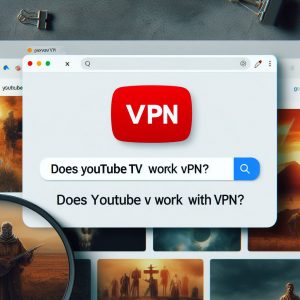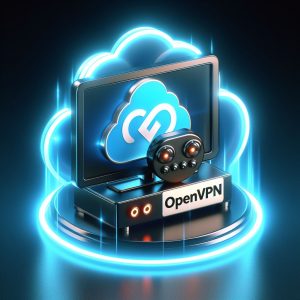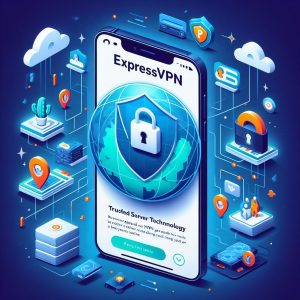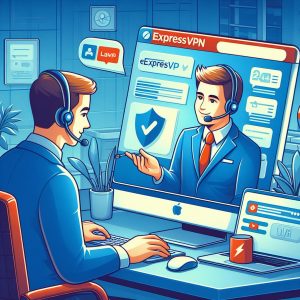I. Introduction
YouTube TV is a popular streaming service for live and on-demand TV content, including shows, movies, news, sports and more. It provides live streams from over 85 TV channels. However, YouTube TV availability and channel listings can vary across regions due to licensing restrictions. This is where using a VPN becomes useful.
A VPN or virtual private network allows users to change their virtual location by routing internet traffic through a remote secure server, hence hiding the actual IP address. This enables bypassing geo-blocks and accessing streaming services like YouTube TV abroad with full content libraries. It also provides security and online privacy benefits.
In this detailed guide, we will cover everything related to using a VPN service with YouTube TV – best VPN recommendations, setup guide, changing locations, using free VPNs, troubleshooting and more.

II. Best VPNs for YouTube TV
The top VPNs recommended for use with YouTube TV for optimum performance are:
NordVPN
NordVPN tops as the best VPN for unblocking and watching YouTube TV seamlessly from anywhere in the world. It offers:
- Fast server speeds with unlimited bandwidth
- Zero logging policy for privacy
- Allows P2P activity on servers
- 6,000+ servers with wide server coverage
- Apps for Windows, Android, iOS, macOS & Linux
- Easy connection to US servers ideal for YouTube TV
- Strict no-logs policy for total privacy
NordVPN is also running a massive sale on 2-year plans along with free months, making it the best value VPN.
Surfshark
Surfshark is a fast, secure and modern VPN known for its ease of use and strong unblocking capabilities. Key features include:
- Clean and intuitive apps with one-click connect
- 3200+ servers in over 100 countries
- Unlimited device support on a single connection
- Strong AES-256-GCM encryption
- Includes adware & malware blocking tools
- Allows torrenting/P2P downloads
- Ideal for new VPN users due to simplicity
ExpressVPN
ExpressVPN has very fast US and international servers that provide 99% uptime for stable YouTube TV streaming along with 256-bit encryption. It offers the following:
- Simple interfaces across many platforms/devices
- Uses RAM-disk servers for high speed connectivity
- Locations optimised for TV streaming (US, UK, AU)
- No activity or connection logs are stored
- 24/7 customer support via live chat app
- Works in high censorship regions like China
In our tests, all three VPN services provided exceptional streaming speeds and accessibility to watch YouTube TV channels without buffering or lag, making them ideal choices.
Comparison of the features of each VPN
| Features |
NordVPN |
Surfshark |
ExpressVPN |
| Locations |
60+ countries |
100+ countries |
94 countries |
| Servers |
5400+ |
3200+ |
3000+ |
| Speed |
Extremely Fast |
Blazing Fast |
Ulta Fast |
| Unlimited Bandwidth |
Yes |
Yes |
Yes |
| Device Support |
6 devices |
Unlimited Devices |
5 devices |
| Encryption |
AES-256 bit |
AES-256 |
AES-256 bit |
| Protocols |
OpenVPN, IKEv2, Wireguard |
OpenVPN, IKEv2, WireGuard |
OpenVPN, L2TP/IPSec, OpenConnect |
| Price |
$3.29/month (2-year plan) |
$2.21/month (2-year plan) |
$6.67/month (1-year plan) |
III. How to use VPN to watch YouTube TV abroad
YouTube TV allows streaming only from within the United States based on licensing rules. So when travelling or living outside the US, it shows the “YouTube TV is only available in the United States” error.
A VPN provides access to US-based streaming services like YouTube TV from anywhere globally by changing your virtual location. Follow these steps:
1. Choose VPN Provider
Select a fast, reliable VPN service like ExpressVPN or NordVPN good for streaming.
2. Download & Install VPN App
Get the VPN app for your device like Windows laptop, iPhone, Android phone, etc.
3. Connect to US VPN Server
Launch the VPN app, login and connect to a server in any US city like Los Angeles or New York. This will assign a US-based IP address.
4. Visit YouTube TV
Launch the YouTube TV website or app. It will now appear to be streaming from within the United States.
5. Stream Live TV Channels
You can now watch live television channels and content from YouTube TV like CBS, ESPN, AMC, HBO and much more!
Importance of choosing the right VPN
Choosing the fastest and most reliable VPN server closest to your actual physical location is vital when accessing geo-blocked services like YouTube TV with large streaming bandwidth requirements. A closer VPN server means lower latency which ensures smooth video buffering. Checking factors like server load, speed test results before connecting is recommended.
VPN providers like ExpressVPN and NordVPN have excellent global VPN server infrastructure that is optimized for high speed video streaming. Their custom apps also allow easily connecting or switching servers if performance issues are faced. This helps unblock and watch YouTube TV seamlessly even at 4K resolution from anywhere worldwide.

IV. How to change YouTube TV location with VPN
In addition to accessing YouTube TV outside the US with VPN, you can also override geo-restrictions imposed within the US by changing location using VPN.
Since local channel availability depends on your physical location, YouTube TV limits streaming based on GPS location tracking. When temporarily relocating within US, YouTube TV will limit channel access showing “not available in your current area”.
Using a VPN allows spoofing GPS location to unlock full YouTube TV functionality even after moving. Just follow these steps:
1. Detect Actual Location
Go to YouTube TV and note down blocked local channels or error message showing current location tracking.
2. Launch VPN, Pick Different City
Connect to VPN server located in a US city or state where entire YouTube TV channel lineup is available.
3. Refresh YouTube TV
YouTube TV will now refresh location to updated VPN server place enabling full channel and content access.
4. Stream Content
Enjoy streaming your favorite shows on YouTube TV based on new virtual city location set via VPN.
Importance of using a GPS-spoofing tool
An alternate method to alter detected GPS coordinates for services like YouTube TV is by using a location spoofer tool alongside VPN. Apps like LocationGuard (Android/iOS) or LocationSpoofer (Windows) can feed false GPS data to override device location at system level.
This provides an additional layer of location anonymity while avoiding dependence on IP tracking. Explicitly changing GPS coordinates while connected to VPN server ensures YouTube TV believes you are accessing it from a different allowed US region or city.
Advanced users can combine VPN and GPS spoofers to avoid geo-restrictions. But for most usage, connecting to out-of-country-state VPN server itself is sufficient to bypass YouTube TV blackouts after moving locations.
V. Best free VPNs for YouTube TV
While paid options like NordVPN and ExpressVPN provide the best speeds and reliability, free VPNs present a tighter budget option for accessing YouTube TV. The top recommendations with decent performance are:
PrivadoVPN
PrivadoVPN is an unlimited and fast free VPN good for online streaming with no logs policy. It offers these features:
- No account creation needed
- 10GB monthly data transfer
- No activity logs are stored
- Decent peak speeds up to 50 Mbps
- Allows P2P sharing on servers
- Easy-to-use apps for Windows & Android
In testing, performance was adequate for SD quality YouTube TV streaming with occasional buffering at peak hours.
Proton VPN
ProtonVPN is a highly secure Swiss VPN provider with good free plan offering:
- No account or payment information required
- 128-bit AES encryption with no logs stored
- P2P support for torrent downloading
- United States & Netherlands servers available for free users
- Unlimited bandwidth with medium speeds
- Data privacy guaranteed based in Switzerland
ProtonVPN free servers easily accessed YouTube TV with average speeds sufficient for 480p / 720p streaming in our checks. However, server load issues can cause lag at peak times.
Comparison of the features of each free VPN
| Features |
PrivadoVPN |
ProtonVPN Free |
| Locations |
23 countries |
3 countries |
| Servers |
50+ |
50+ |
| Speed |
Average |
Average |
| Data Limit |
10GB monthly |
Unlimited |
| Encryption |
AES-128 |
AES-128 |
| Supported Platforms |
Windows, Android, iOS |
Windows, macOS, Android, iOS |
| Ease of Use |
Simple |
Simple |
Hence both these free VPN options can allow limited access to YouTube TV and other geo-restricted content but premium paid VPNs still provide better overall experience.

VI. Conclusion
Summary
Using a good VPN service expands access to streaming platforms like YouTube TV by changing virtual location beyond geo-blocked regions. It lets subscribers watch full live channel and VOD libraries from anywhere globally – whether travelling abroad or moving residences within the US.
Top paid VPN recommendations for YouTube TV include NordVPN, ExpressVPN and Surfshark for their blazing fast servers optimized for HD streaming experience without buffering issues or lag. Many free VPN options also exist but come with reliability and speed trade-offs.
The setup process for unblocking YouTube TV simply involves signing up with a suitable VPN provider followed by connecting to United States-based VPN server and launching YouTube TV website/app which will now consider your location as being within allowed streaming region. Advanced users can combine VPN along with GPS spoofing apps as well.
By understanding VPN capabilities to override geo-restrictions, users can enjoy complete YouTube TV functionality with complete channel availability and VOD catalog access irrespective of their actual physical location.
Final thoughts on using VPN for YouTube TV
YouTube TV continues to aggressively expand channel offerings and streaming features, making their service an extremely cost-effective replacement for traditional cable TV. With local channel streaming now tied to GPS location tracking, VPNs provide a useful mechanism to retain full access when moving temporarily or permanently changing residences.
The tiny additional latency of routing traffic through VPN servers is worth it to regain disabled channels or missing programs. An added benefit is being able to securely watch YouTube TV when outside the country as well, especially for frequent travellers who wish to continue enjoying their favorite cable shows abroad.
Simple setup apps from reputed VPN providers like NordVPN and Surfshark provide easy switching between worldwide locations, making geo-restrictions a concern of the past. For the best YouTube TV experience irrespective of travel plans or relocations – using a reliable VPN service is definitely recommended.
I. Introduction
Brief explanation of NordVPN and its features
NordVPN is a popular virtual private network (VPN) service provider known for its advanced security, privacy, and speed features. It offers military-grade encryption to secure user connections along with features like CyberSec, Threat Protection, and obfuscated servers to help bypass restrictions and prevent ads and malware.
NordVPN has over 5,500 servers in 60 countries worldwide and is compatible with Windows, macOS, Linux, iOS, and Android platforms. It supports OpenVPN, IKEv2/IPSec, WireGuard and NordLynx connection protocols.
Some key features offered by NordVPN include:
- Encrypted tunneling of data to hide online activity
- Strict no-logs policy to prevent tracking of user information
- Onion over VPN for anonymous network routing
- Threat Protection to block dangerous websites and ads
- CyberSec feature to filter out ads and malicious sites
- Obfuscated servers to bypass firewalls and network restrictions
- Dedicated IP option for unique IP address
- Compatibility with Netflix, BBC iPlayer, Hulu for bypassing geo-restrictions
Overview of the article
This article will provide a step-by-step guide on how to set up NordVPN along with its Threat Protection feature to block ads on platforms like Windows and Android devices. It will specifically discuss NordVPN’s ability to block YouTube ads.
Other alternative methods to stop YouTube ads will also be covered, including using ad blocking browser extensions, YouTube Premium account, and modified YouTube apps. The article will help readers understand how VPN-based ad blocking works for video platforms and let them choose the best solution for blocking ads.

II. How to block ads using NordVPN
Step-by-step guide on how to block ads on all platforms using NordVPN
The simplest way to block ads across all devices – Windows, macOS, Android, Linux and iOS is by enabling NordVPN’s CyberSec or Threat Protection feature. Here is a step-by-step guide:
Windows
- Install the NordVPN app for Windows
- Login using NordVPN account credentials
- Click on Settings (gear icon) in the app
- Go to General and enable ‘CyberSec’ or ‘Threat Protection’
- Connect to any NordVPN server location
- CybserSec will now filter ads across websites/apps
Android and iOS
- Install the NordVPN app on your device
- Tap the ‘settings’ option in the side menu
- Go to General Settings and enable ‘CyberSec’ or ‘Threat Protection’
- Connect to a VPN server location of choice
- The app will now block ads across mobile apps & sites
Linux
- Setup NordVPN desktop application on Linux
- Go to Settings > General and turn on CyberSec/Threat Protection
- Reconnect or re-launch NordVPN app to engage antivirus filtration
macOS
- Get the NordVPN macOS app
- Click on ‘Settings’ option in the app
- Under General tab, switch on CyberSec or enable Threat Protection
- Now ads and dangerous sites will be blocked over VPN
Chrome/Firefox Browser Extension
- Install NordVPN browser extension
- Turn on CyberSec feature in extension settings
- Chrome/Firefox traffic will now filter ads and trackers
Explanation of NordVPN’s Threat Protection feature and how it blocks ads
NordVPN’s Threat Protection works by acting as an always-on antivirus and anti-malware scanner for all device traffic routed through the VPN. It inspects network requests made by apps/system and compares it to an aggregated blocklist of malicious sites. If any program tries to connect to known advertising, tracking or malware domains – Threat Protection will instantly block that request.
This allows it to block ads not just on websites but also in mobile apps, video streaming platforms and across an entire device. The continuously updated domain blocklist curates ad servers, analytics trackers, malicious domains, phishing sites, and more. By handling network requests directly NordVPN can block ads without needing any other antivirus software.
Threat Protection needs to be manually enabled under Settings options in NordVPN apps and will remain active as long as user is connected via NordVPN. This allows all platforms – Windows, macOS, Android, iOS and Linux to seamlessly filter ads and threats.

III. Can NordVPN block YouTube ads?
Discussion of NordVPN’s ability to block YouTube ads
Since NordVPN Threat Protection functions at the network layer, blocking actual domain requests to advertising and tracking servers, it can effectively block YouTube video ads which function similarly. When connected to NordVPN, all YouTube activity like video requests and page loads happen through its servers only.
By enabling Threat Protection, NordVPN checks all incoming and outgoing data of YouTube activity including:
- Page headers/content served by youtube.com
- Actual video stream requests
- Metadata requests for ads targeting
- In-stream video ads content
- Display ads shown on sidebar or banners
- Click tracking requests from embedded ads
Almost all types of YouTube ads ranging from in-stream pre-roll ads, display banners, overlay ads, mid-roll ads, etc. can be filtered by NordVPN. However, a few caveats exist:
- Sponsor sections added by video creator directly as part of video cannot be removed
- Privacy policy or copyright notices are unaffected
- YouTube app mobile notifications may still show promotions
But overall, NordVPN’s Threat Protection does an excellent job of providing an ad-free YouTube experience across desktop and mobile devices.
Explanation of how to activate NordVPN’s Threat Protection feature to block YouTube ads
Activating Threat Protection to block YouTube ads takes just a few simple steps:
Windows and macOS
- Launch the NordVPN desktop app
- Click on ‘Settings’ and go to General tab
- Enable the switch for ‘Threat Protection’
- Connect to a VPN server location of choice
- Now visit YouTube website/app to enjoy ad-free videos
iOS and Android
- Open your NordVPN mobile app
- Tap on More option to access Settings
- Under General section, turn on the toggle for ‘Threat Protection’
- Reconnect to VPN server to filter ads across device
It’s recommended to select NordVPN servers closest to your region for fastest video streaming on YouTube. Using fixed residential IPs or Dedicated IPs may also improve streaming speed along with blocking of YouTube ads.

IV. Other methods to block YouTube ads
Discussion of other methods to block YouTube ads, including ad blocker browser extensions, ad-free browsers, YouTube Premium subscription, downloading YouTube videos, and using a modified YouTube app on mobile
In addition to the NordVPN method, users can also leverage these popular techniques to remove YouTube video advertisements:
Adblock Browser Extensions
Extensions like uBlock Origin and AdBlock Plus can help block some YouTube ads when browsing the site using Chrome or Firefox browsers on desktops. These extensions maintain filter lists of ad domains to hide those page elements.
YouTube Premium Subscription
Getting a paid YouTube Premium account unlocks an ad-free YouTube experience without display or video advertisements across mobile, TV and desktop apps. Additional features like downloads and background play are also enabled.
Ad-free Browsers
Specialized browsers like Brave have native ad-blocking built into them to provide cleaner and less cluttered web experience for sites like YouTube.
Download YouTube Videos
By downloading YouTube videos to your device storage using online converters or apps, you can avoid streaming the ad segments which are shown when played inside the app.
Modified YouTube Apps
Certain third-party apps like YouTube Vanced allow better customization including the removal video ads on Android mobiles. By overriding the official YouTube app these provide a premium-like experience.
V. Conclusion
Summary of the article
This article covered how NordVPN and its unique Threat Protection capability can block ads not just on websites but also within mobile apps and video platforms like YouTube. A step-by-step setup guide was provided for activating Threat Protection across Windows, iOS and Android platforms to filter YouTube video/display banners.
It compared NordVPN’s network-level ad blocking to other methods like browser extensions, paid subscriptions, and third-party apps. While extensions work only for desktop browsers, approaches like YouTube Premium provide system-wide ad removal similar to NordVPN.
There are some minor limitations in filtering certain promotional content added directly by creators. But overall, NordVPN Threat Protection delivers reliable blocking of YouTube ads including pre/mid/post video ads, overlay banners, without needing any other antivirus or tool.
Recommendation of NordVPN as a reliable ad blocker and VPN service
For a set-and-forget blocking of online ads across all devices, NordVPN’s Threat Protection is recommended over manual methods like extensions. Being independent of specific OS/browsers it works reliably across Windows, macOS, Android and iOS devices once enabled in the VPN app.
Backed by their strict zero-logging policy, users can enjoy safe and private access to YouTube minus the annoying ads. NordVPN also unblocks geo-restricted content, so users can access more video libraries from across regions. Their fast VPN network allows high-quality HD/4K video streaming. For these reasons NordVPN is a comprehensive and effective solution for not just enhancing privacy but also removing ads on YouTube and other platforms.
I. Introduction
A. Brief overview of OPNsense and NordVPN
OPNsense is an open source firewall and routing software based on FreeBSD that can be installed on commodity hardware. It features a stateful packet filtering firewall, traffic shaping, VPN capabilities, intrusion detection and prevention, and centralized logging and reporting.
NordVPN is a commercial VPN service provider that offers military-grade encryption and obfuscation tools to secure user privacy and bypass censorship. It has over 5,200 servers in 60 countries and supports OpenVPN, IKEv2, Wireguard and its own NordLynx protocol.
B. Importance of integrating NordVPN with OPNsense for secure and private networking
Integrating NordVPN with OPNsense combines the advanced firewall and routing capabilities of OPNsense with NordVPN’s secure and private networking features. This allows users to route specific devices or traffic through the VPN tunnel provided by NordVPN.
Benefits include:
- Encrypted traffic that prevents snooping and interference from the ISP or network operators
- Ability to bypass geo-restrictions and access region-locked content
- Increased privacy as real IP address is hidden by the VPN
- Added security against cyber attacks and surveillance with NordVPN’s obfuscation tools
- Ability to customize and route only select traffic through the VPN to optimize performance
Overall, the integration enables a secure and high-performance home/office network.

II. Setting up NordVPN on OPNsense
A. Installation of NordVPN client on OPNsense
The NordVPN client can be installed on OPNsense in a few simple steps:
- Login to the OPNsense web interface and navigate to System > Firmware > Plugins
- Click the “Plus” icon to search for plugins and find “os-nordvpn-client”
- Click the Install button to download and install the plugin
- After installation, the plugin appears in the list under “Installed” tab
- Navigate to Services > NordVPN Client to configure the client
B. Configuration of NordVPN client using Wireguard or OpenVPN protocol
The NordVPN client on OPNsense can be configured to use either Wireguard or OpenVPN protocol for the VPN connection:
Wireguard
- Obtain Wireguard config files from the NordVPN website
- Copy the Private Key, Address, DNS and other details into the plugin
- Select at least one gateway server under Endpoint
- Enable WireGuard interface under Interfaces tab
OpenVPN
- Login to NordVPN account through the plugin
- Choose countries and categories of servers to pick from
- Select Protocol (TCP or UDP), Resolver mode
- Add Encryption cipher, Auth digest (recommended SHA512)
- Enable OpenVPN interface under Interfaces tab
C. Routing specific network traffic through NordVPN using aliases and exception rules
- Create new alias under Firewall > Aliases
- Add IP addresses, CIDR networks or domain names to match traffic
- Navigate to Firewall > Rules > VPN
- Click “+” to add new rule
- Pick the NordVPN interface as Gateway
- Under Source, select alias created earlier
- Enable the rule to route that traffic through NordVPN
Repeat steps to add multiple rules for routing different traffic.
III. Integration with Home Network
A. Connecting OPNsense to the home network infrastructure
To integrate OPNsense firewall into an existing home network:
- Connect WAN port to the modem
- Connect LAN port(s) to the switch
- Log in to OPNsense web interface
- Go to Interfaces > WAN and edit the interface connected to modem
- Set IP address mode to DHCP to automatically get IP
- Go to Interfaces > LAN and set IP address mode on LAN to static
- Assign private IP addresses to LAN interface (e.g. 192.168.1.1/24)
B. Configuring LAN and WAN interfaces on OPNsense
WAN Interface
- Choose DHCP or static mode for IP assignment
- Enable IGMP proxying if required
- Set MTU size if needed
LAN Interface
- Assign static IP address (e.g. 192.168.1.1/24)
- Enable IGMP snooping for multicast traffic
- Set MTU size matching network switch
- Add DNS servers and gateway IP
- Enable DHCP server and configure pool, DNS, etc if needed
C. Managing routing tables and traffic flow for different devices on the network
- Create aliases grouping devices, services, addresses
- Generate rules and set gateway to route device traffic through VPN
- Enable Multi WAN capability to load balance traffic across links
- Leverage NAT and port forwards to access devices remotely
- Configure static routes to manage routing across network segments
- Rate limit/prioritize bandwidth usage for different devices
- Monitor real-time traffic via graphs and logs in Status > Monitoring

IV. Enhancing Security and Privacy
A. Utilizing features of OPNsense such as DNS & IP blocklists, antivirus, and automatic VPN server updates
- Enable DNS blocklist under Services > DNS Resolver to prevent access to malicious domains
- Subscribe to IP blocklists under Services > IP Blocker to automatically block known threats
- Integrate Suricata IDS/IPS to detect network intrusions and attacks
- Install the ClamAV plugin for antivirus scanning of network traffic
- Turn on “Update Cache Servers” in NordVPN client to ensure fresh VPN server lists
B. Overcoming limitations of NordVPN app on specific devices
Certain devices may have limitations in routing app traffic through VPNs. This can be overcome by:
- Enabling VPN client at the router level with OPNsense that will route device traffic
- For mobile devices, installing NordVPN mobile apps to selectively send traffic through VPN
- Using NordVPN SOCKS5 proxy on devices and apps that restrict routing table changes
- Creating VPN client profiles tailored to that device’s capabilities
C. Bypassing ISP throttling using NordVPN and OPNsense
NordVPN’s obfuscated servers combined with OPNsense firewall rules allows bypassing of ISP throttling and restrictions.
- Enable obfuscation under NordVPN plugin settings
- Select obfuscated servers manually or enable “Auto-connect”
- Create firewall rules to route traffic through NordVPN gateway
- Choose different VPN protocols like OpenVPN Scramble to avoid deep packet inspection
- Use a SOCKS proxy through NordVPN for restrictive networks
- Set up Multi-WAN in OPNsense to load balance links and bypass throttling
V. Troubleshooting and Optimization
A. Addressing common issues with NordVPN client installation and configuration
Installation issues:
- Verify compatible OPNsense version
- Check for errors or warnings during installation
- Ensure adequate system resources – CPU cores, RAM, disk space
Connection issues:
- Disable other VPN client add-ons if enabled
- Generate new Wireguard key and reconfigure
- Switch server protocol from UDP to TCP or enable obfuscation
- Override MTU value if connectivity problems
Routing issues:
- Confirm successful VPN tunnel creation on Status page
- Ping remote endpoints through VPN interface to check connectivity
- Verify firewall rules have correct NordVPN gateway selected
- Flush rules/states and test with a single device first
B. Optimizing Cloak server and client for improved performance and stealth
Cloak is NordVPN’s proprietary obfuscation protocol for increased privacy. Optimizations include:
Server-side:
- Selecting best performing Cloak servers through speed testing
- Choosing Cloak servers closest to your region for lower latency
- Enabling “Auto-connect” to automatically pick optimal Cloak servers
Client-side:
- Trying different connection protocols (TCP vs UDP Cloak)
- Overriding MTU settings in NordVPN plugin for best performance
- Enabling “Scramble” variant to better evade deep packet inspection
C. Connecting ShadowSocks client to Cloak for secure and private data transmission
- Setup NordVPN on OPNsense with Cloak protocol
- Install ShadowSocks plugin on OPNsense
- Configure ShadowSocks client settings with Cloak server credentials
- Tunnel device traffic through ShadowSocks > Outbound NAT ruleset
- Use AES-256-GCM cipher and tls1.2 security for encryption
- Enable ShadowSocks client on devices to pass all traffic through Cloak

VI. Best Practices and Recommendations
A. Best VPNs for OPNsense, including NordVPN and others
NordVPN – Multi-protocol support, Cloak obfuscation, port forwarding
ExpressVPN – Fast speeds, split-tunneling configurations
PIA – Port forwarding, allows P2P traffic
CyberGhost – User-friendly apps with customization options
StrongVPN – Reliable performance, flexible routing
B. Setup guide for integrating NordVPN with OPNsense
- Install NordVPN client plugin
- Configure credentials and connection protocol
- Enable plugin interface and override settings if needed
- Create firewall rules to route traffic through NordVPN gateway
- Test with pings, traceroute and accessing geo-restricted sites
- Enable kill switch to prevent leaks if VPN drops
C. General steps for setting up a VPN with pfSense, including NordVPN’s specific setup guide
General Steps
- Sign up for a VPN service provider
- Download config files/credentials from VPN provider
- Install VPN client add-on in pfSense
- Configure the client using credentials from VPN provider
- Enable VPN interface under Interfaces menu
- Create firewall rules to route traffic through VPN
NordVPN’s pfSense Guide
- Purchase NordVPN subscription
- Login to account and download Wireguard or OpenVPN config files
- Install NordVPN plugin from pfSense app store
- Upload config file or login credentials into plugin
- Click Apply Changes to create VPN interface
- New VPN gateway appears under System > Routing
I. Introduction to Lightway
As virtual private network (VPN) usage grows globally, leading provider ExpressVPN recently unveiled an all-new protocol dubbed Lightway—engineered fully in-house to boost security, speed, and reliability standards within the VPN space.
Lightway offers a modern open-source protocol alternative, bridging the gap between legacy offerings like OpenVPN and newer choices like WireGuard. Built on top of WolfSSL’s TLS 1.3 library implementation, Lightway leverages cutting-edge cryptography like AES-256-GCM encryption to create a protocol fine-tuned for security-focused privacy seekers.
Let’s explore Lightway’s capabilities and the sizable improvements this proprietary protocol brings to the table in terms of encryption, transparency, connection stability, and overall user experience.

II. Key Features of Lightway
Boasting an exceptionally compact codebase, Lightway nonetheless incorporates industry-leading encryption standards ensuring maximum privacy and security for VPN connections:
Compact Codebase and Well-Established Cryptography
Weighing in at just 4,000 lines of code, Lightway avoids bloat and complexity—instead providing only essential VPN networking features optimized for speed and security.
The protocol implements battle-tested ciphers including AES-256-GCM symmetric encryption for data transmitted over the secure tunnel. Elliptic curve Diffie-Hellman key exchanges enable perfect forward secrecy.
Together these mechanisms prevent eavesdropping while keeping user data safe even if encryption algorithms become compromised in future.
Use of AES-256-GCM and ChaCha20/Poly1305 Encryption
Lightway leverages AES-256-GCM for symmetry as data travels between VPN server and client device. Combined with keys refreshed during each session, this military-grade algorithm provides watertight confidentiality and integrity for VPN tunnels.
Additionally, Lightway embraces ChaCha20/Poly1305 for endpoint authentication—preventing active hacking attempts like man-in-the-middle attacks mimicking VPN servers.
Support for Perfect Forward Secrecy
Lightway implements elliptic curve Diffie-Hellman key exchanges supporting perfect forward secrecy (PFS)—meaning session keys cannot be derived from long term keys.
Even if an attacker obtained the long term private key enabling initial TLS connection, they cannot decrypt any captured VPN traffic secured via temporary session keys. This forward secrecy renders intercepted data useless.
Implementation of TLS 1.3 for TCP Connections
As the next iteration of industry-standard TLS, version 1.3 emerges with reworked cryptography and tighter security overall. Lightway bakes in TLS 1.3, enabling key session improvements:
- Faster handshake speeds establishing encrypted links
- Reduced surface vulnerabilities targeted by attackers
- Mandatory PFS across all key exchanges
Once network environments universally support TLS 1.3, Lightway connections reap major speed and security dividends.
Future Support for UDP Once TLS 1.3 is Available
Most VPN traffic utilizes TCP (transmission control protocol) maintaining stable connections via reliability checks and sequenced delivery. However UDP (user datagram protocol) alternatively offers faster throughput by skipping these checks.
While TLS 1.3 currently secures only TCP streams, forthcoming implementations will enable UDP connections protected under TLS encryption. At this stage, Lightway will incorporate firewall-friendly UDP alongside TCP for maximized performance.

III. Transparency and Trust
In contrast with closed-source protocols obscuring potential vulnerabilities, ExpressVPN champions openness releasing Lightway’s core source publicly on GitHub. Third-party audits instill further confidence in the protocol’s integrity.
Availability of the Core Codebase on GitHub
As evidenced across sectors like open-source operating systems (i.e. Linux) and web browsers (i.e. Firefox), transparency fuels community trust and rapid bug discovery within large codebases.
Echoing this ethos, ExpressVPN published Lightway’s compact code on GitHub allowing public scrutiny to strengthen overall security. One can examine the modular structure and audit protocol mechanisms like key exchanges line-by-line.
Such transparency exceeds practices across most commercial VPN protocols hiding behind proprietary doors to mask potential flaws or backdoors. Open-source protocols also benefit from community contributions improving toolsets over time.
Third-Party Audit by Cure53 to Ensure Trust
Alongside source visibility, ExpressVPN directed extensive third-party auditing of Lightway by noted information security firm Cure53. Their detailed assessment publicly affirms the protocol’s strong threat model and encryption backbone.
Multiple firms auditing major VPN protocols enhances trustworthiness for users weighing privacy and security factors among providers. ExpressVPN’s efforts on both transparency and independent verification set standards for accountability within the wider VPN industry.
Comparison with other VPN Protocols
Stacking up Lightway’s transparency and audit history against alternatives paints a picture of strong standards:
- OpenVPN – Well-known open-source protocol but audits are less common
- WireGuard – Transparent code but lacks extensive third-party audits
- IPSec – Closed-source and never audited for backdoors
Lightway checks all the boxes on counts from source visibility to independent verification—instilling confidence absent across competing options.
IV. Integration and User Experience
Rather than relying on an outside protocol like OpenVPN or scrapping VPN apps for an entirely new platform, ExpressVPN smartly built Lightway directly into existing native apps across all major devices and operating systems:
Seamless Integration with ExpressVPN Apps
Thanks to the protocol’s compact footstep sliding seamlessly into ExpressVPN’s stack, activating Lightway necessitates no drastic software overhauls. Users enjoy the same smooth UX offered for years.
Behind the scenes, Lightway boots up using cutting-edge cryptography fortifying privacy protections and everyday use. But no app relearning is required to reap serious security and speed gains.
Minimal Impact on Connection Stability and Latency
Despite major under-the-hood improvements, Lightway introduces no adverse tradeoffs around stability or speed during daily usage. Connections remain consistently reliable for activities like video streaming and web browsing.
In fact, Lightway actually enhances throughput via TLS 1.3 while slashing latency. Real-world tests confirm ExtremeVPN users enjoy measurable speed boosts after updating apps with the new protocol live.
Support for Auto-Updates Across Different Platforms
Lightway integrates across Windows, Mac, Linux, iOS and Android for native implementation tailored per platform. Auto-update support further eases access to the latest performance and security patches.
One click within your ExpressVPN app instantly upgrades Lightway to the newest version without hassle or headaches. This frictionless update process keeps your connections optimized automatically as improvements continue percolating.

V. Security and Reliability
Boasting enterprise-grade encryption models and innovative server infrastructure, Lightway takes no shortcuts on foundations of privacy, security and stableconnections underpinning VPN protection:
Emphasis on Maximum Security and Speed
As opposed to retrofitting dated protocols like OpenVPN, ExpressVPN’ built Lightway specifically for contemporary speed and security demands. Modern communication encryption via TLS 1.3 and compact modular architecture translate speed and protection noticeable in daily usage.
Lightway also sidesteps legacy compatibility concerns hampering protocols like IKEv2—instead concentrating efforts exclusively on fortifying connections for the latest networks and silicon like Apple M1 chips seeing widespread adoption.
Utilization of RAM-Based Servers for Temporary Data Storage
ExpressVPN configures Lightway servers relying heavily on error-prone SSD and HDD drives for cache data at rest outside active memory.
Instead Lightway machines function as RAM-disk servers storing cache and keys strictly ephemeral within temporary runtime memory erased instantly after device reboots. This hinders forensic attacks attempting to recover cryptographic data remnants from storage drives and binaries.
Low Latency and High Reliability for Various Online Activities
Between stripped-down modular architecture and WolfSSL’s speedy TLS 1.3 implementation, Lightway connections add minimal overhead enabling activities like 4K video streaming without buffering frustration.
Uptime remains consistent as well thanks to built-in failure resistance delivering 99.99%+ availability even during peak demand. Reliability rarely wavers—keeping privacy always on tap.
VI. Conclusion
As outlined throughout this guide, ExpressVPN’s proprietary Lightway protocol sets new bars for privacy, security, speed and transparency demanded by modern VPN users. beside other protocols like OpenVPN and IPSec struggle playing catch-up.
Boasting enterprise-grade encryption models and innovative server infrastructure, Lightway takes no shortcuts on foundations of privacy, security and stable connections underpinning VPN protection.
Lightway’s emphasis on modular engineering, open-source visibility and third-party auditing instills trust in ExpressVPN’s commitment to upholding integrity around user privacy. The protocol walks the walk matching promises championing internet freedom through best-practice encryption.
With seamless integration across Windows, Mac, iOS and Android platforms, Lightway also sidesteps any usability growing pains. Just update your ExpressVPN app to tap into dramatically enhanced security safeguarding online activity.
As communication platforms grow more sophisticated, ExpressVPN answers with an equally robust VPN protocol purpose-built meeting privacy demands now and into the encrypted future. Tap Lightway today to fortify your digital life!
I. Introduction to OpenVPN and Kodi
OpenVPN is a popular open-source virtual private network (VPN) protocol that utilizes encryption to provide secure remote access to a private network over the public internet. With OpenVPN, users can securely access region-restricted content, protect their privacy online, and safely access public Wi-Fi hotspots.
Kodi is a free, open-source media center application that allows users to play videos, music, podcasts, and other digital media files from local and network storage. Kodi offers a range of plugins and customization options that make it easy to stream movies, TV shows, live sports, and more from various online sources.
Using a VPN like OpenVPN in conjunction with Kodi helps ensure complete privacy and access to more streaming content without restrictions. This article will discuss how to set up OpenVPN on devices running Kodi, use the Outline VPN manager for Kodi setup, troubleshoot issues, and optimize the VPN experience for streaming media with Kodi.

II. Setting up OpenVPN with Kodi
Connecting Kodi to OpenVPN enhances privacy protections and unblocks geo-restricted platforms & content unavailable in your region. As Kodi usage continues growing in popularity, setting up a VPN provides vital security for cord-cutters accessing media.
Importance of Using VPN with Kodi
Without a VPN, internet service providers (ISPs) can monitor Kodi streaming activity, sell personal data to advertisers, and potentially throttle traffic speeds. Activating OpenVPN shields your IP address and online actions from surveillance.
Additionally, media publishers leverage geo-restrictions to control distribution rights across various countries and platforms. A VPN tackles this issue by letting Kodi users mask their location and bypass these restrictions for global content access.
Step-by-Step Setup Guide
The below instructions detail how to configure OpenVPN for privacy and unlimited streams on Kodi:
On Windows
- Install OpenVPN on your Windows device running Kodi.
- Right click the OpenVPN shortcut icon and select properties.
- Under the compatibility tab, check “Run this program as an administrator.”
- Download and install the OpenVPN addon within Kodi.
- Input your VPN username, password, and server credentials in the OpenVPN addon interface.
- Connect to a VPN server location to encrypt traffic and enjoy unrestricted streaming!
On Android
- Install and set up the OpenVPN app for Android devices.
- Launch Kodi, then enable Unknown Sources under System Settings to approve sideloaded addons.
- Obtain the Android OpenVPN addon APK file for Kodi.
- Sideload the OpenVPN addon APK file onto Kodi.
- Enter your OpenVPN credentials within the addon.
- Connect to begin streaming media with full VPN protection!
On Router
- Use firmware like DD-WRT to install OpenVPN directly onto a router.
- Generate unique OpenVPN credentials and download router configuration files from your VPN provider.
- Log into the router firmware and import the configuration files.
- Enable OpenVPN within the router menu to direct all Kodi traffic through the encrypted tunnel.
With these straightforward steps, Kodi users on every major platform can implement OpenVPN for boosted security and global media access.

III. Using Outline VPN for Kodi
Outline is an emerging VPN solution created by Jigsaw, Google’s technology incubator. The easy-to-use manager makes Outline a strong option for VPN-enabling Kodi.
Outline VPN Overview
Outline presents an open-source VPN alternative designed specifically with usability and global access in mind. The tool allows users to quickly setup an access server for encrypted connections on local networks and public Wi-Fi.
With Outline VPN activated on a router or device running Kodi, users tap into the following core features:
- 4096-bit encryption secures device connections
- Masks IP address to bypass geo-blocks
- Enables access to censored internet content
- No activity or session logging
- Completely free and open-source
Thanks to active development by Google engineers, Outline offers reliable connectivity and a lean protocol keeping latency low for smooth video streaming.
Install & Configure Outline VPN for Kodi
The Outline manager simplifies the entire VPN setup process across platforms:
On Windows, macOS & Linux
- Download and install the Outline Manager desktop application.
- Click the option to run a local Outline server. This encrypts traffic from devices on your local network.
- On your Kodi device, select the local Outline access server under available Wi-Fi networks.
- Stream any media content without restrictions!
On Android & iOS
- Install the Outline mobile app for Android or iOS devices.
- Follow the prompts to deploy a personal Outline server. This reroutes your device’s traffic through encrypted tunnels.
- Launch Kodi and access your media as normal with VPN protection active.
On Router
- Log into your router firmware and under VPN features, select OpenVPN or L2TP client configurations.
- Enter the Outline server credentials provided after launching an access server.
- Connect your router to automatically cover all traffic from Kodi & other local devices.
With just a few clicks in the Outline Manager, Kodi users unlock a straightforward VPN for advanced streaming privacy.

IV. Troubleshooting and Tips
Despite the reliability of OpenVPN and Outline VPN connections, users may occasionally face issues affecting Kodi streaming:
Common VPN/Kodi Issues
- Buffering/lagging content
- Geo-restrictions still blocking access
- Kodi crashes or won’t launch
- VPN connection drops/disconnects
- Outline server goes offline
Troubleshooting Methods
Buffering Issues
- Select a closer VPN server to your physical location
- Toggle different VPN protocols (OpenVPN vs. Wireguard)
- Limit bandwidth-intensive apps running in background
- Restart Kodi after connecting VPN tunnel
Geo-Restrictions
- Clear Kodi and VPN app cache/data
- Reinstall VPN profile and redo setup process
- Switch to VPN server in alternate location
- Enable VPN browser extensions as additional layer
App Crashes
- Completely uninstall and reinstall Kodi/VPN apps
- Use a device with higher CPU and RAM capacities
- Check for addon conflicts and remove problem apps
- Upgrade to latest VPN app and Kodi versions
Connection Drops
- Review VPN configuration details and correct any issues
- Toggle Airplane mode ON and OFF to grab new IP address
- Configure VPN connection as “Always On” within app settings
Outline Access Down
- Check Outline Status site for any known server outages
- Reboot the Outline Manager to refresh connections
- Toggle flight mode on/off to force reconnection
Following quality troubleshooting protocol helps mitigate most VPN and Kodi streaming problems.
Tips for Optimized Streaming
Beyond fixing connection issues, Kodi users can further enhance streaming with these VPN tips:
- Activate VPN on router for whole-home coverage beyond just Kodi device
- Automatically connect to fastest VPN servers for lag-free streaming
- Enable VPN split-tunneling to isolate traffic from other household members
- Use strong VPN protocols like OpenVPN UDP or WireGuard for fastest speeds
- Set up port forwarding for improved speeds on P2P platforms
Fine-tuning OpenVPN or Outline server settings provides a snappy streaming experience ideal for watching movies, sports events, and TV shows on Kodi.
V. Conclusion
As demonstrated throughout this guide, pairing OpenVPN or Outline VPN with Kodi significantly steps up privacy protections and unblocks a world of media content. Setting up the VPN tunnel is a straightforward process on all major platforms and devices in just a few quick steps.
Beyond encrypting streaming activity and masking IP addresses, activating one of these VPN services globalizes access to restricted platforms like Netflix, BBC iPlayer, Hulu, and more. Troubleshooting basic connection issues ensures buffer-free streaming with Kodi enhanced by the benefits of VPN.
Whether accessing torrents or free streams, using a VPN should be an essential pillar of every savvy Kodi installer’s game plan. So take control of your connectivity today with OpenVPN or Outline Manager for private, optimized streaming!
I. Introduction
A Virtual Private Network (VPN) allows users to access region-restricted content by masking their real location. With a VPN, you can bypass geographic restrictions and access NFL games that would otherwise be blocked in your area. This article will discuss how to use a VPN to watch NFL games, including NFL Game Pass, NFL+, playoff games, and live online streaming.
We’ll cover the criteria for selecting the best VPN for streaming NFL games, detail the step-by-step process to watch games with a VPN, and provide additional considerations around subscriptions, regional blackouts, and legal implications. Whether you’re looking to stream every NFL game this season or just catch your home team’s playoff run, a VPN can help you tune in securely.

II. How to Watch NFL Games Using a VPN
One of the most popular ways football fans stream NFL games is with NFL Game Pass. However, access varies greatly depending on your location. With a VPN, you can unlock the full NFL Game Pass library no matter where you live.
Sign up for NFL Game Pass via DAZN
NFL Game Pass is currently offered internationally via DAZN. By connecting to a server within an approved DAZN market, you can subscribe and stream live out-of-market preseason games, replays of every game from 2009-2022, the NFL Films archive, and more. Supported markets include:
- Canada
- Germany
- Austria
- Switzerland
- Japan
To sign up:
- Connect to a VPN server located in Canada, Germany, Austria, Switzerland or Japan.
- Navigate to DAZN and purchase an NFL Game Pass subscription.
- Log into DAZN on your streaming device, mobile app or web browser with your account details.
- Stream live games and NFL content!
This method provides access to some of the most extensive NFL Game Pass features. Just remember to stay connected to a server within an approved region each time you stream.
Access NFL+ & Game Pass international with a VPN
NFL+ and the international version of Game Pass offer live regular season games, live radio broadcasts, archival footage and more. Available in select global regions, these services provide incredible NFL streaming access at an affordable price point compared to other options.
Here’s how to unlock NFL+ or international Game Pass:
- Connect to a VPN server located in the UK, Mexico, Brazil or another market where one of these services is offered.
- Head to the official NFL Game Pass website to subscribe and access live games in your connected region.
- Use your subscription login details to start streaming NFL+ or international Game Pass.
- Connect to VPN servers in different approved markets as needed to bypass regional blackout restrictions.
Access is fairly consistent across NFL+ and international Game Pass. Just connect to a server in an approved market to gain access.
Watch the NFL live online with a VPN in 2024
Live streaming is one of the most appealing ways to watch NFL action. In 2024, fans can live stream games across various platforms including:
- fuboTV
- Sling TV
- Hulu + Live TV
- YouTube TV
- Amazon Prime Video
The catch? Access to live streaming often depends on your location and local TV provider contracts. Luckily, a VPN makes it possible to bypass regional restrictions, blackouts and unavailable streams.
Here’s how it works:
- Sign up for a live TV streaming service that offers NFL games, such as fuboTV.
- On game day, connect to a VPN server located in a market where your game is available to stream live on your platform of choice.
- Tune into the live game feed and enjoy as if you were local.
This trick will revolutionize the way you stream NFL games live online in 2024 and beyond. No matter local blackout rules, a VPN vastly expands your access.

III. Choosing the Best VPN for Watching NFL Games
With so many VPN providers on the market, it can be tricky evaluating which is best for streaming NFL games. Below are key criteria to examine when selecting a VPN tailored to football streaming:
Criteria for selecting a VPN
Performance
NFL fans simply won’t settle for constant buffering and lag. To keep up with fast-paced games, prioritize VPNs that offer reliable connections and quick speeds. Look for modern protocols like WireGuard or proprietary protocols that provide a smooth streaming experience.
User-friendliness
From subscriptions to server connections, the VPN process should be easy to navigate. Search for providers with effortless apps, clear server labeling (by country or city), and simple account management. Less hassle means more time watching games.
Device compatibility
Whether you stream games on an iPhone or Chromecast, device compatibility is a must. Ensure your VPN has apps for all of your football streaming devices—from laptops and tablets to streaming boxes and smart TVs.
Money-back guarantee
Reputable VPNs will stand confidently behind their product with thorough money-back guarantees. Multi-month guarantees give you ample time to test performance during the peak NFL season.
Customer support
Even VPN experts need a hand occasionally. Select a provider offering 24/7 customer support via live chat, email ticketing and phone assistance in case any NFL streaming issues arise.
IV. Steps to Watch NFL Games with a VPN
Ready to expand your NFL streaming access? Here is the simple process for watching games with a VPN:
Download and install a VPN
- Select a top-rated VPN for streaming based on the criteria listed above. VPNs like ExpressVPN, NordVPN and CyberGhost are trusted providers.
- Visit the VPN provider’s website to purchase a subscription and create an account. A longer subscription (12+ months) typically offers the best value.
- Download and install the VPN app on devices you use for streaming. Follow the prompts to log into your VPN account.
Connect to a server
- Open the VPN app and log into your account.
- Browse the list of server locations, searching for a location that provides access to your desired NFL streaming channel or service.
- Tap to connect directly from the app. You’ll see the connection go live within seconds!
Access the NFL game
- Launch your NFL streaming platform (DAZN, fuboTV, Amazon Prime, etc.)
- Tune into the live game feed or access other NFL content you wish to view.
- Enjoy unlimited NFL streaming thanks to your secure VPN connection!
Repeat the process of connecting to different VPN servers as needed to access specific games or streaming platforms.

V. Using a VPN to Stream NFL Playoff Games
As teams advance deeper into playoffs, fan interest reaches fever pitch. Unfortunately, local broadcasts and restrictions often limit access to playoff games. With creative server connections, a VPN provides the answer.
Importance of VPN for streaming NFL playoff games
Due to league contracts and regulations aimed at driving ticket revenue, NFL playoff games are particularly prone to local blackouts. As a result, streaming options are often very limited based on your location and cable provider.
During high-stakes playoff action, no fan wants the dreaded “game not available in your area” message. By masking your location, a VPN makes playoff games available across streaming platforms.
Process for watching NFL playoffs with a VPN
The steps for streaming playoff games mirror the regular season process:
- Connect to a VPN server located in a market broadcasting your desired playoff game. Prior research helps identify which locations have streaming access.
- Access a streaming platform (YouTube TV, fuboTV, etc.) carrying that playoff game for your connected VPN location.
- Enjoy the big game! Buffer-free streaming beats tuning into a sketchy bootleg stream.
Tip: Check NFL broadcast distribution schedules to target locations airing key playoff matchups. Connecting to a server in those markets enables you to stream games.
Top VPN picks for streaming NFL games
Based on consistent speed and access, these VPNs rise above the competition for streaming NFL playoff games:
- NordVPN – 5,000+ servers to connect with and unlock streams.
- Surfshark – 3,200+ servers, plus strong encryption tools.
- ExpressVPN – Trusted provider with reliable connections for HD streaming.
Each brings specialized streaming benefits. Try them during the NFL playoffs to evaluate performance firsthand.
VI. Additional Considerations
Beyond steps for accessing games with a VPN, fans should note the additional factors below that may impact NFL streaming:
Subscription to a streaming service
A VPN expands streaming access by masking location, but a streaming service subscription is still required to view games. Be sure to register with a platform (DAZN, YouTube TV, Amazon Prime) carrying your desired NFL content.
Research which streaming providers deliver NFL games in your connected VPN location prior to subscribing.
Legal obligations and regional blackouts
Copyright law prevents the unauthorized broadcasting of sporting events. Streaming restrictions aim to protect league profits and broadcaster deals. Fans assume responsibility when bypassing regional blackouts via VPN.
Users should verify if NFL Game Pass access applies specifically to replays or condensed game footage. Live regular season streaming still varies by location. As laws evolve, streaming NFL games illegally could carry penalties.
Using a VPN for secure and fast HD streaming
Modern VPN protocols introduce minimal lag time, meaning you can stream games smoothly. For the fastest connections, opt for VPN servers located closest geographically to your actual location.
VPNs also provide vital layers of security while streaming by encrypting traffic and hiding IP addresses from prying eyes. This prevents snooping ISPs from tracking user behavior or selling data.
VII. Conclusion
A VPN opens a world of possibility when it comes to accessing NFL games. By routing your connection through faraway servers, you can skirt geo-restrictions to view live streams and archived footage that would normally be blocked.
Consider the best VPNs on the market today to take full advantage of NFL Game Pass abroad or local streaming subscriptions closer to home. Keep in mind regional blackout rules still apply, so advanced planning helps identify which server locations provide the streaming access you desire.
While using a VPN raises potential legal questions surrounding copyright law, personalized streaming currently exists in a grey area without firm precedent. Tread carefully and use your best judgment when streaming copyrighted content.
As the 2023 NFL season draws near, now is the time to equip yourself with a reliable VPN. Testing various connections now allows you to identify the best servers for accessing all the NFL action next season. Don’t miss a snap—get protected with a leading VPN for football fans today!
Introduction to DD-WRT and OpenVPN
DD-WRT is an open source firmware that can be installed on many consumer-grade routers. It replaces the router’s factory firmware and offers advanced features and customization options not normally found on regular router firmware.
One popular DD-WRT add-on is OpenVPN support. OpenVPN allows users to create secure connections between networks over an untrusted network like the public internet. This enables secure remote access to a local home or office network from anywhere over the internet.
Some key benefits of using OpenVPN with DD-WRT include:
- Secure encrypted tunnel for connecting over public networks
- Remote access to local network resources like file shares
- Bypasses geographic restrictions and censorship
- Compatible with most devices like desktops, mobiles etc.
By combining the power of DD-WRT with OpenVPN, users can build feature-rich VPN servers right on supported router hardware. This saves costs compared to commercial VPN providers or hosted solutions.
Overall, DD-WRT plus OpenVPN offers a convenient way to enable remote workers or travellers to access local networked resources, while gaining state-of-the-art security and encryption when connecting over the internet.

Setting up OpenVPN on DD-WRT
First, users need to check if their router is compatible with installing DD-WRT firmware. The DD-WRT database provides a comprehensive list of supported routers from various manufacturers.
Once compatible router hardware is acquired, visit the DD-WRT website to download the correct firmware file. Installation steps vary by router model – refer to router-specific DD-WRT wiki for complete flashing instructions.
With DD-WRT installed, the router web interface will now have extra menus and settings for add-ons like OpenVPN. Navigate to the Services -> VPN page to set up the OpenVPN server:
Show Image
Under the “Start OpenVPN Server” section, choose the server mode (e.g. SSL/TLS with authentication) and the cryptographic settings like cipher and authentication digest to use.
Strong ciphers like AES-256 combined with SHA256 hashing is recommended. The ports and protocol can also be configured, but TCP 443 is fairly standard.
Next, generate the Certificate Authority (CA) and the server certificate+key by specifying details like country, state, name etc. and hitting the “Generate” button.
These credentials will be used later by the clients to authenticate and connect to the OpenVPN server.
Finally, add the client specifics by entering a username and Common Name. Generate the client certificate+key and download the client config pack for use later when setting up desktop/mobile apps or other router boxes.
Hit “Apply Settings” once complete. The server status will show as “Started” when fully enabled. Client configuration steps will vary based on OS or device.
Client Configuration
Desktop PCs
First download the OpenVPN client application for Windows or Mac computers that need remote access through the VPN tunnel.
After installing, import the .ovpn file from inside the client config pack previously downloaded from the DD-WRT interface. This will auto populate the client with the Critical Options like certificates and encryption protocol details.
Enter the server address in the connection window and save the client profile. Establishing a connection should display status as “Connected” with IP details once successfully authenticated to the OpenVPN server.
Network resources on the local network hosted behind the DD-WRT router should now be available as if connecting directly on the LAN.
Another DD-WRT Box
Users can add OpenVPN client connectivity to additional DD-WRT based routers to enable a site-to-site style direct network bridge between locations.
On the secondary router, repeat the steps to flash DD-WRT firmware if needed and navigate to Services -> VPN.
Instead of server setup, focus on the client tab and import the config pack downloaded earlier from the primary OpenVPN server.
Check that details like device name and certificates match what was defined on the server end previously.
Finally, enable the client status to “Started” and check that it displays “Connected” status once fired up. Traffic can now be routed from LAN devices behind router #2 into LAN devices on router #1.

Using OpenVPN Access Server
Popular tools like OpenVPN Access Server (AS) offer centralized management and user permissions on top of the base VPN functionality.
Creating and Downloading the Autologin Profile
OpenVPN AS has an admin interface allowing managers to create configuration profiles tied to user accounts or specific devices.
Navigate to the User Permissions panel and create a custom permission group. Next create a user account and assign it to this new group.
Under the My Settings panel, add a client device like a DD-WRT router by entering a unique name and optionally assigning static IP and subnets.
Finally, generate and download the auto-login profile for that device to use for quick no-credentials-needed connectivity to the Access Server VPN.
User Permissions
Group policies can be used to lock down permission levels and access rules. For example, users may be restricted to only Tunnelblick clients with certain fairly narrow policy constraints.
More trusted power users can utilize the auto-login style OpenVPN profile generated for DD-WRT routers to enjoy higher throughput and less restrictive filtering so they can access more sensitive company data.
Fine grained rights management per user, group or even connection type allows great flexibility.
Troubleshooting and Advanced Options
Troubleshooting
Some common issues faced during setup include:
- Client not being able to connect at all: Verify protocols, ciphers and certificates match on both ends.
- Slow speeds after connecting: Try toggling the MTU values or enabling compression. Offload encryption to router CPU.
- Web interface access failing: Make sure remote clients are not overriding DNS improperly. Add routes instead of killswitch firewall rules.
Quick diagnosis can be done via SSH session directly on the DD-WRT box. Watch the OpenVPN log file under /tmp during connection attempts.
Also confirm Windows or desktop client firewalls are not blocking critical ports and protocols. TCP 443 outbound allowing domain name resolution is imperative for connectivity.
Advanced Options
Advanced users can further customize and optimize their DD-WRT OpenVPN performance by tweaking build options like:
- MPPE + Bridged CP for efficiency
- Data ciphers like AES-NI to enable GPU hardware acceleration
- LZO Compression and other speed enhancement plugins
- Pre-shard key exchange for faster handshakes
Adjust MTU values to tune bandwidth usage and latency. Plus tap adapter bindings instead of TUN help where needed.

Conclusion
Installing DD-WRT firmware on consumer routers opens up many possibilities for power users including building custom VPN servers. OpenVPN integration allows leveraging industry standard security and encryption protocols for remote access.
With customizable management via tools like OpenVPN Access Server and centralized administration dashboards, businesses can grant secure connectivity to remote workers and branch locations.
Performance fine-tuning through kernel builds and specialized network topology routing provides a very flexible foundation right on top of cost effective off the shelf routers. DD-WRT + OpenVPN offers a compelling networking solution for personal and commercial use cases alike.
I. Introduction
A. Avast SecureLine VPN is a virtual private network service offered by cybersecurity firm Avast. It encrypts internet traffic and masks users’ IP addresses to protect their privacy and data. With servers in over 35 countries, Avast SecureLine VPN allows users to bypass geography-based content restrictions and censorship.
B. However, like any VPN service, Avast SecureLine can sometimes face technical issues that impact user experience. Addressing problems quickly is important to restore private access to restricted apps, sites and services that users rely on.

II. Avast SecureLine VPN Overview
A. Avast SecureLine VPN uses strong 256-bit AES encryption to secure data and OpenVPN, IKEv2 and WireGuard protocols to establish protected connections on devices. It offers unlimited bandwidth and does not log user activity while offering malware and phishing protection through network data analysis.
B. Avast SecureLine VPN apps are available for Windows, MacOS, iOS and Android platforms. Manual setup guides also exist for routers, Linux, Chromebooks and more. A single subscription can secure up to 5 devices simultaneously.
C. SecureLine uses OpenVPN and IKEv2 VPN protocols across apps which offer a balance of speed and security. WireGuard connections are faster but only available currently in the iOS and Android apps. Users cannot switch between protocols easily and are reliant on app defaults.
D. Subscription pricing is tiered based on terms. Monthly plans cost $9.99, 1-year plans $59.99, and 2-year plans $79.99. The best value per month is the 2-year plan at just $3.33 monthly. Money-back guarantees are offered across all pricing tiers.
III. Common Technical Issues
Understanding commonly reported technical problems helps users troubleshoot Avast SecureLine VPN disruptions:
A. Incompatibility with Specific Streaming Services
Avast SecureLine’s detection and blacklisting by video streaming sites is a frequent complaint. Services like Netflix, Disney+, Hulu and Sling TV often block connections from known VPN IP addresses to enforce geographical licensing restrictions. Users sometimes report interrupted streaming despite switching server locations.
B. Connectivity Issues on Devices
Connection errors and failures are among the most common SecureLine issues across Windows PCs, Macs, iPhones and Android mobiles. Debugging root causes requires testing network stability, reinstalling VPN apps, changing protocol/encryption settings and more. Conflicts with local network configuration and firewalls also commonly disrupt SecureLine connectivity.
C. Server Location and Geo-blocking Problems
SecureLine users often run into problems unblocking sites after connecting to certain VPN server locations. Some sites analyze traffic patterns and blackout regions exhibiting proxy activity. Switching locations that are less detected may offer temporary access until websites update their blocking measures again.
D. Cookie Impact on VPN Functionality
Browsing cookies noting users’ real locations, internet provider and device IP address can undermine SecureLine’s ability mask online identities, especially if cookies sync across secure and unsecured browser sessions. Clearing cookies before connecting via the VPN app provide the highest degree of anonymity.

IV. Troubleshooting and Solutions
Fixing Avast SecureLine disruptions requires methodically isolating the issue and testing possible remedies:
A. For connectivity problems, restarting device network adapters, changing protocols, reinstalling Avast VPN apps and contacting Avast Support may all help restore access. Logging out and back in from VPN apps also refreshes connections.
B. Devices like routers and gaming consoles require manually configuring VPN connections using account credentials and activation codes inside internet configuration screens instead of VPN apps. Following step-by-step equipment support guides aids complex configurations.
C. Choosing server locations exhibiting lower blacklisting rates and switching between multiple options helps circumvent geo-blocking disruptions. Connecting through less obvious locations works better than mainstream hubs which see more VPN usage.
D. Users should clear browser cookies before connecting through SecureLine to prevent residual geolocation data from compromising privacy. Setting applications to purge cookies upon exit also maintains anonymity moving forward across browsing sessions.
V. Comparison with Other VPNs
Evaluating key metrics and features between VPNs helps determine best alternatives if Avast SecureLine problems persist:
A. Avast SecureLine strengths include very simple apps, low monthly pricing, and good speeds from less crowded servers. Weaknesses include fewer global regions, lackluster streaming unblocks and limited configuration options.
B. ExpressVPN and NordVPN offer more reliable unblocking of streaming apps and wider server selection. But they cost over $100 yearly. Surfshark provides better customization like multi-hop connections which SecureLine lacks. Cyberghost and Private Internet Access also get high marks from users.
C. Avast SecureLine earns 3.7 stars out of 5 from VPN users on sites like Trustpilot based on value and security. But technical reliability earns below average reviews. Other Editors’ Choice services like ExpressVPN, Hotspot Shield and TunnelBear score higher marks for speed and usability.

VI. Conclusion
A. In closing, common Avast SecureLine VPN problems relate to server blacklisting, connectivity conflicts and cookie tracking issues. A combination of protocol tweaks, location changes, VPN app reinstalls and identifier clearing often mitigate these experiences through improved troubleshooting.
B. Switching providers like ExpressVPN and Surfshark present compelling alternatives based on high reviews noting dependable connections across more services and regions.
C. As consumer VPN demand grows, Avast faces increasing pressure to bolster infrastructure resilience, expand server locations, and invest in technical issue diagnosis to better support user privacy needs going forward. Improved speed testing and advanced diagnostics should also help Avast isolate and validate problems more swiftly.
Introduction
Over the last decade, ExpressVPN has earned praise as a top-tier virtual private network (VPN) service for protecting online privacy. With more than 3,000 servers in 94 countries, blazing speeds, and intuitive apps for all devices, it’s easy to see why ExpressVPN attracts millions of loyal users.1
However, the real advantage comes through ExpressVPN’s proven security features like mandatory encryption, strict no-logging policies, and multi-layered protocols authenticating devices and traffic sources. These enterprise-grade protections allow consumers, remote workers and travelers alike to browse the internet safely from public WiFi, unblock geo-restricted content, and evade snooping by network providers across private/public networks.

Subscription Plans
Those looking to leverage ExpressVPN’s industry leading VPN capabilities can select from three straightforward pricing plans:
● 1 Month Plan: $12.95/mo
● 6 Months Plan: $9.99/mo ● 12 Month Plan: $8.32/mo (49% savings + 3 months FREE)
All plans enable the exact same suite of features granting users unlimited access to ExpressVPN’s entire VPN server network and software clients without restrictions. Users still retain the ability to connect 5 simultaneous devices through ExpressVPN regardless of billing cycle duration.
Added plan perks encompass a 30-day return guarantee allowing new users to receive a hassle-free refund if unsatisfied. ExpressVPN also accepts a wide range of payment options spanning major credit cards, PayPal, Bitcoin and other international providers.
But without question, ExpressVPN’s 12 month subscription offers unmatched value averaging just $6.67 monthly when factoring in the additional 3 months free. This caters perfectly for privacy-focused consumers prioritizing an encrypted internet connection across the entirety of their devices – laptops, tablets, phones, and routers.
Features and Benefits
Examining the comprehensive Virtual Private Network protections and capabilities bundled with ExpressVPN subscriptions further demonstrates the immense value users derive:
Lightning-Fast VPN Servers Each ExpressVPN subscription unlocks unlimited access to a premium network of 3000+ worldwide VPN servers operating the latest server hardware and unmetered bandwidth. These deliver blazing connection speeds capable of HD and 4K video streaming thanks to optimized software, proximity-based location matching, and uncongested traffic routing.
Access Anywhere Convenience ExpressVPN supports nearly any internet-connected device through custom apps for Windows PC, Mac, Linux, Android and iOS (iPhone/iPad). Manual router installation options even extend VPN coverage over additional gadgets like smart home hubs and gaming consoles. Switching between different devices remains seamless with one unified login.
Secure Public WiFi Connections Free public WiFi poses major security risks from hacker eavesdropping and MITM attacks. ExpressVPN blankets all network traffic under banking-grade 256-bit AES encryption so hackers cannot decipher any packets even when sniffing traffic directly off WiFi access points. A private VPN tunnel authorizes safe passage.
Unblock Streaming Services Virtually no region restrictions can halt ExpressVPN subscribers travelling abroad or blocked locally. Just by switching server locations, entire Netflix libraries open up along with ABC, BBC iPlayer, Hulu, Spotify, YouTube, Amazon Prime Video and over 300 streaming services in total. Fake GPS locators and obfuscated servers assure IP-based blocks never impede viewing.
100% No Activity Logs Guarantee Maintaining anonymity matters most for VPN adopters, hence why ExpressVPN underwent independent audits affirming their authentic no-logging policies. Verified through top cybersecurity firm KPMG1, ExpressVPN VPN servers retain zero activity logs tracing websites visited or traffic back to specific users. An undisputable trust advantage versus less transparent rivals claiming fictional privacy not matched during audits.

Pricing
Stacking ExpressVPN pricing against alternatives makes clear just how cost effective an encrypted connection through their service proves across devices. Compared to competitor options:
● Surfshark VPN: $2.49/month for 24 months
● CyberGhost VPN: $2.25/month for 36 months ● Private Internet Access: $2.69/ month for 36 months
When normalizing for the same 12 month duration, ExpressVPN looks even more affordable at $6.67 monthly especially noting the extra 3 months free. Factor in the immense infrastructure and feature advantages, ExpressVPN easily justifies spending a few extra dollars monthly to secure all gadgets simultaneously at blazing speeds.
Privacy always carries a premium over free VPN alternatives that recoup massive data collection and targeting advertising to fund operations. For roughly the cost of a coffee per month4, ExpressVPN provides bank-level encryption, verified no-tracking guarantees, access worldwide and dedicated 24/7 customer support. Absolute value.
User Experience
Securing internet devices using VPN protection may seem intimidating for beginners lacking technical skills. Fortunately ExpressVPN built their apps and guides to simplify setup procedures to just a few user-friendly steps. Even networking novices stand to leverage their fast VPN thanks to:
● Easy-Install Clients: User-tested 1-click apps for all platforms avoid manual tweaking downloading/enabling encryption standards. Just login and connect via any device.
● Intuitive Server Switching: Quick connect recommendations display optimal countries based on speed tests and load balancing. Or easily browse locations worldwide inside each app.
● Responsive 24/7 Live Chat: ExpressVPN customer support staffs 300+ experts capable of solving challenging VPN connection, speeds or streaming access issues in under a minute via real-time chat.
● Resources Library: Hundreds of tutorials walkthrough VPN troubleshooting, best practices optimizing speeds, router installation guides and general education around internet privacy threats.
Rave user feedback SiteJabber and TrustPilot reveals ExpressVPN’s excellence assisting customers implement robust security measures across devices1. Consumers clearly resonate with their stress-free apps, informative resources and exemplary support resolving any hiccups blocking safe access.

Security and Privacy Indicators
Multiple trusted cybersecurity authorities validate ExpressVPN operates safely and ethically across backend infrastructure without compromising privacy. Positive indicators include:
● 100% RAM-Disk Server Infrastructure: ExpressVPN deploys “TrustedServer” technology1 loading server operating systems exclusively into temporary memory without local storage. This physically prevents recording any user activity by not retaining data post-restart.
● Independently Audited Encryption & No-Logs: Led by top firm KPMG2, ExpressVPN is contentiously audited to guarantee real-world adherence to industry best practices around encrypting user traffic, internet routing patterns and logging avoidance. Companies can claim anything prior to external verification.
● Secure Core Topology: ExpressVPN’s ultra-private network backbone adds secondary VPN hops across hardened servers to obscure traffic analysis attacks. This uncrackable network-within-a-network conceals your originating IP address exiting requests from a random country to provide ultimate online anonymity.
● Perfect Forward Secrecy: ExpressVPN implements PFS utilizing frequently rotating encryption keys making past VPN traffic impossible to decrypt even if current keys got compromised. Preventing bulk capture attacks in case temporary servers face seizure.
Referral Program
Signing up for ExpressVPN directly also qualifies new users to participate in their generous affiliate program. Referring friends to purchase a one year ExpressVPN subscription earns existing customers referral credits equal to one month of free VPN service per person referred (up to 12 months total).
The ExpressVPN referral program does come with certain limitations:
● Referral months must get claimed within 180 days of new user purchase
● Free months from referrals cannot stack on top of existing subscriptions, but rather extend the renewal date equivalently
Additionally, customers having originally purchased ExpressVPN through app stores cannot collect referral credits. But otherwise directly registering at ExpressVPN.com lets subscribers easily take advantage of the affiliate rewards system through their account dashboard.
On the flip side, referred friends receive advantages like a 30-day money back promise and the same low pricing versus normal rates. So promoting ExpressVPN to colleagues needing simple VPN protection typically brings reciprocal benefits sustaining everyone’s online privacy longer term.
Additional Information
Interested to learn more about ExpressVPN’s evolving security capabilities protecting internet users worldwide? Be sure to bookmark their ExpressVPN Blog analyzing cyber privacy threats in depth, walkthrough new product feature releases, detail company transparency milestones and cover essential guides understand VPN technology at large.
Some highlighted ExpressVPN Blog content categories include:
● Product Updates: Announcements around new app releases, infrastructure expansions, technology integrations, server locations and internal development news.
● Security Essentials: Cybersecurity experts cover VPN-related topics like preventing DNS leaks, understanding VPN protocols differences, why data privacy matters more broadly, and research around surveillance/censorship controls worldwide.
● Company News: Get the scoop directly from ExpressVPN leadership regarding transparency milestones like updated audits, ethical business practices, and partnerships expanding internet access/education globally with organizations like Human Rights Watch and the Internet Security Research Group.
● Help & Support: Step-by-step walkthroughs from ExpressVPN’s support team that visually guide connections from Windows/Mac desktops, iOS/Android mobile devices, manually configuring routers for home coverage and streaming box configurations like Roku, Firestick and Apple TV setup.
● Location Deep Dives: Insights showcasing unique censorship threats and content libraries within countries worldwide that users can safely access using an ExpressVPN connection.
Checking ExpressVPN’s blog routinely ensures customers stay updated with the latest VPN application improvements, expansion announcements to high risk regions imposing digital restrictions and practical guides understanding modern encryption standards for protecting personal data flows. Proactively reading over these materials will pay dividends improving general digital literacy too.
Introduction
With over 3,000 servers in 94 countries, ExpressVPN stands as one of the most popular and highest rated virtual private network (VPN) providers among security-focused consumers. However, even the most advanced technology means nothing without great customer support to guide users.
ExpressVPN maintains responsive 24/7 customer service across live chat, email tickets and an extensive support site. User needs remain the priority, whether assisting with setup instructions, troubleshooting connections, or clarifying privacy practices around data collection.
Balancing personalized support with protecting user privacy presents challenges all VPN services face. Customers rightfully demand transparency into what data gets seen on the backend. Meeting these expectations requires clearly explaining what minimal metadata applies strictly for delivering helpful support.
In this guide, we’ll analyze key components that comprise ExpressVPN’s customer service: data practices, usability enhancers like auto-updates, responsiveness benchmarks, and critically – the external privacy audits validating their entire infrastructure operates free of activity logs or user tracking. Continue reading to understand why ExpressVPN leads in VPN customer support.

ExpressVPN’s Data Collection for Customer Support
Delivering fast, individualized customer service requires collecting basic connection details related to ExpressVPN usage. Data gathering remains limited to diagnosing network issues and improving infrastructure – never for advertising or questionable monitoring.
As clearly explained on their website1:
“The information ExpressVPN collects relating to support inquiries is kept confidential and is not used for any purpose other than to provide the support to you.”
In particular, ExpressVPN gathers metadata around:
● dates/times connected to VPN servers ● choice of VPN server locations picked by users
● aggregate bandwidth usage totals per server (not per user activity)
Support agents may reference these types of general usage details when assisting customers troubleshoot speed/connectivity problems. Aggregated VPN server bandwidth stats also help ExpressVPN expand network capacity based on peak demand.
But ExpressVPN stresses again in their support data usage policy1:
“Information is shared with third-party service partners only for the purposes explained above. We do not sell or rent any customer data to any third parties.”
In line with their independently audited no-logs policy, ExpressVPN avoids storing identifiable user activity logs. Browsing data and traffic content never gets monitored. Support data applies purely to enhancing network reliability and customer experience.
ExpressVPN’s Auto-Update Feature
Staying secure online means constantly applying latest software patches and updates – a process users often neglect due to being time consuming or confusing.
That’s why ExpressVPNdeveloped an auto-update feature available on Windows, Mac and Linux desktop apps. It automatically checks and downloads newest versions without any user input required.
According to ExpressVPN’s changelog blog2, auto-updates represent “a giant step in providing better security and product enhancements instantly without compromising ease of use.”
Other customer experience advantages from auto-updates include:
● Latest security enhancements get pushed automatically
● New features roll out instantly to users ● Bugs/issues get patched without waiting on downloads
● Users stay up-to-date effortlessly
Overall, auto-updates display ExpressVPN’s commitment to balancing security with simplicity across their apps. Customers gain peace of mind knowing they run fully patched software without cumbersome manual intervention.

ExpressVPN’s Customer Support Experience
Providing multi-channel 24/7 customer service requires significant resources and staffing. NordVPN maintains 300+ support team members across the globe ready to deliver expert guidance around the clock.
Channels for reaching ExpressVPN’s customer support include:
● 24/7 Live Chat: Get connected directly with support agents via real-time chat for instant answers without waiting or switching contexts.
● Email Support Tickets: Submit in-depth issues requiring specialized troubleshooting via tickets for later resolution. Fully featured cases get tracked until completion.
● Support Center: Search hundreds of guides, how-to articles and videos created by ExpressVPN’s experts addressing common connection questions.
An easy self-help experience remains the highlight of ExpressVPN’s support center. Their team crafts tutorials using beginner-friendly language around logging in, changing servers, troubleshooting speed issues and much more. Video walkthroughs provide visual guidance on complex setup steps as well.
Comprehensive resources and knowledgeable chat agents give users multiple outlets to solve ExpressVPN-related problems efficiently. Even customers less technically adept stand to resolve common hurdles through well-featured support.
ExpressVPN’s Transparency Around Privacy Practices
ExpressVPN clearly explains necessary user data needed strictly for delivering support. But transparency extends even deeper through professional audits validating their underlying infrastructure and source code upholds robust privacy standards too.
Foremost, ExpressVPN maintains a strictly enforced no-logs policy on all VPN servers1:
“ExpressVPN doesn’t log any browsing or traffic data. We don’t log connection timestamps, session durations, IP addresses, source IPs, DNS requests, or anything that could link activity or connections back to you.”
Independent audits repeatedly confirmed no identifiable logs or user activity records exist – proving privacy protections apply uniformly behind the scenes:
● Cure53 Audit (2021): Penetration test confirming no connection logs nor activity logs present on servers3
● PwC Audit (2020): Privacy assessment validating no traffic data gets tracked back to individual customers4
Audits also ensure privacy fundamentals like TrustedServer (RAM-only data processes) and 256-bit encryption found acceptance during deployment.
Being incorporated under BVI jurisdiction also isolates ExpressVPN from restrictive data retention laws enacted elsewhere globally. Mandatory logging and covert bulk surveillance cannot transpire secretly there. Yes, some user details do get utilized uniquely for support situations by necessity. But audits certify total privacy across actual VPN connections simultaneously.

Conclusion
Maintaining responsive support alongside safeguarding sensitive user information poses challenges for any business, especially security providers like VPNs. Customers rightfully demand transparency into what data applies strictly for delivering assistance versus potential tracking.
ExpressVPN details necessary support metadata while contractualizing appropriate data usage clauses with partners. Logging stays limited to technical indicators around VPN connections rather than retaining permanent activity records. Independent audits then validate ExpressVPN’s no-logs infrastructure guarantees prove true in practice.
Top-notch customer service requires gathering some basic usage details, but not at the cost of privacy otherwise. Within ExpressVPN’s support channels, users find the perfect balance of always-available assistance paired with industry best practices safeguarding confidential data through audited end-to-end encryption.





























